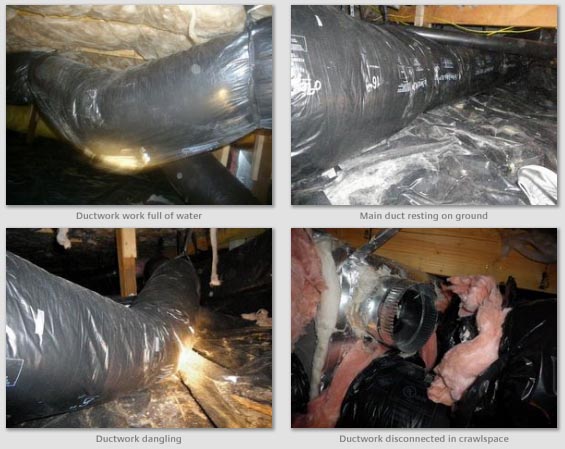|
We had two inspections this week of brand new homes,
and both houses had serious problems with their
ductwork.
 See
a close-up slide show here: See
a close-up slide show here:
The first picture shows a duct full of water. This will cause a host
of problems. Any flexible ductwork that has had water inside
or soaked insulation wrap must be replaced. Once the
flex has become wet, it can hold water for years, making a ideal
breeding ground for molds, mildews and fungus, and pose a risk to
the occupants health.
The second shot is a duct
resting on the ground. All ducts must be at least
4" off the ground (more is better)*. Contact with the
ground will cause heat loss, make it susceptible to water
problems, and easy access for rodents. In the third
picture, the duct is dangling. This type of flex
ductwork should always be fully extended, and strapped up at
5' intervals minimum. The
maximum amount of sag between supports is 1/2 inch
per foot of horizontal run.* This duct is way too loose
and will restrict airflow. This
final picture shows a duct that is not connected at all and is blowing
heat into the crawlspace. This makes it nice and warm, attracting
rodents and giving them easy access to the interior of the home. These
are all issues that most clients would have never known about had
they not had a professional home inspection. You would think
that the city inspectors would have noticed these kind of issues,
but in my years as a contractor, I have never seen a municipal
inspector even enter a crawlspace.
*Source - ASHI
Reporter Bruce Barker, November 2005
| ![]()
